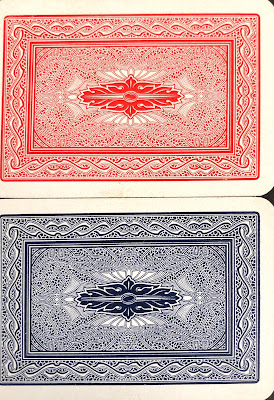Colta & Colta - The Merry Magicians
Many magicians
have claimed to be descendants of great conjurors of the past, and the subject
of this post is no exception. However, unlike most of those who capitalized on
another’s name, Colta the magician had a long and varied career of his own.
Born Charles Joseph Jones in 1890, like many, his interest in trickery started at adolescence. He joined a church club in 1904, and one of the hobby courses included basic magic. He was hooked, and within a year, young Charlie was putting on shows in his hometown of Harrisburg, Pennsylvania as “Colta the Merry Magician” (a name drived from esteemed conjuror Buatier De Kolta, who
was supposedly a distant relative). In 1908, he donned Asian makeup and created
a new stage act to coincide with screenings of movies such as “Prince Ko-Ko,
Oriental Conjuror”. Then, just one year later in 1909, Colta removed the makeup
and entered vaudeville, touring on prominent circuits including the
Ed Mozart Circuit, Gus Sun Time, Sullivan-Considine, Butterfield, and finally, Keith Family Time.
In 1911, though ‘hanging up’ his
vaudevillian ‘coat,’ he kept his wand and continued performing magic alongside
a Philadelphia entertainer named of Christi, and presenting a mechanical doll
called “La-Atta.” He returned home to Harrisburg a year later. Back home, he
married Minnie “Mimi” Engle and worked as a projectionist, a passion that
originated from his 1908 act.
During World War I, Colta was employed at the
Shell Mill of Bethlehem Steel by day, and continued his projection career at
night, far too busy to do magic. After the war, he managed Harrisburg’s
Colonial Theater for a short while, where he frequently booked other magicians
to perform. He then decided to turn back to magic, this time joining
vaudeville’s Artists Revels unit. Unlike his first stint on the circuit though,
he was not alone. Colta now shared the stage with Mimi as “Colta and Colta
the Merry Magicians.”
Bethlehem Shell Plant
Together, they
featured attractions such as Shooting Through a Woman and Rag Pictures. After
traversing several more circuits with new and unique acts such as Mimi playing
a “Living Marionette” and a linking ring routine that included rings being
hurled 20 feet across the stage, the couple returned home to Harrisburg in 1930
and performed local bookings.
Colonial Theater, Harrisburg
I believe this card originates
from around that time:
Longer than a
typical pasteboard, one side advertises a few of the novel entertainments the Coltas could provide, and the other features Charlie pulling a fake rabbit
out of a hat. He really appears to be a Merry Magician! In the 40s, during World War II, Charlie devoted over 500 hours to entertaining servicemen in camps and hospitals.
Tom Ewing discovered two cards for the Colta's in his collection. They show that Colta's wife Mimi also performed magic and was adept at billiard ball manipulation. Her scaling or business card shows her with those billiard balls. The back of the card identifies her as one of the Magigals - an organization of female magicians who had members nationwide.
Colta's card shows him with fez and dove and a double fan of cards with birds on them. The back of his card also identifies him as a Shriner from the Zembo Temple in Harrisburg. Both cards appear to be from later in their careers.
He was also active in magic societies, becoming the
first president of The Magicians Alliance of Eastern States (MAES), and was a co-founder and
first president of both The Society of American Magicians Assembly 22 and The
International Brotherhood of Magicians Ring 20.
Charlie and Mimi appeared in an advertisement for Martin’s Magic Shop, featured in the August 1952 issue of Genii Magazine, with Charlie performing Dell O’Dell’s "Apple Tubes" trick. The couple moved to California in 1957, where Charlie was active in The Society of American Magicians assembly 22, and was awarded an honorary life membership from the Pasadena Magicians Guild. In 1971 the Coltas moved back to Harrisburg, where Charlie passed away in 1973 and Mimi in 1978. Update
Here are several additional images of the Colta's. One is s a nice image of the their suitcase that they carried parts of their show in for many years.
The other image shows their marionette act with Mimi worked the Hula Girl figure and Charlie working a clown. Both images are provided thanks to Sal Perrotta.
With the exception of this last photo above, most of the images of Colta thus far have been from later in his career. Through the kindness of Mike Caveney and his Egyptian Hall Museum, we offer these additional very nice images of him in younger years.
Colta The "Gay Deceiver" on the Redpath Chautauqua Circuit circa 1908-09
(Courtesy of Egyptian Hall Museum)
Colta performing the floating ball in the Christi-Colta act
on the Mozart Circuit 1910.
(Courtesy of Egyptian Hall Museum)
Colta with a Flag Vase Production circa 1920.
(Courtesy of Egyptian Hall Museum)
Colta with six precision dancer puppets used in his night club act 1930-31.
(Courtesy of Egyptian Hall Museum)
Ben Winn






















































